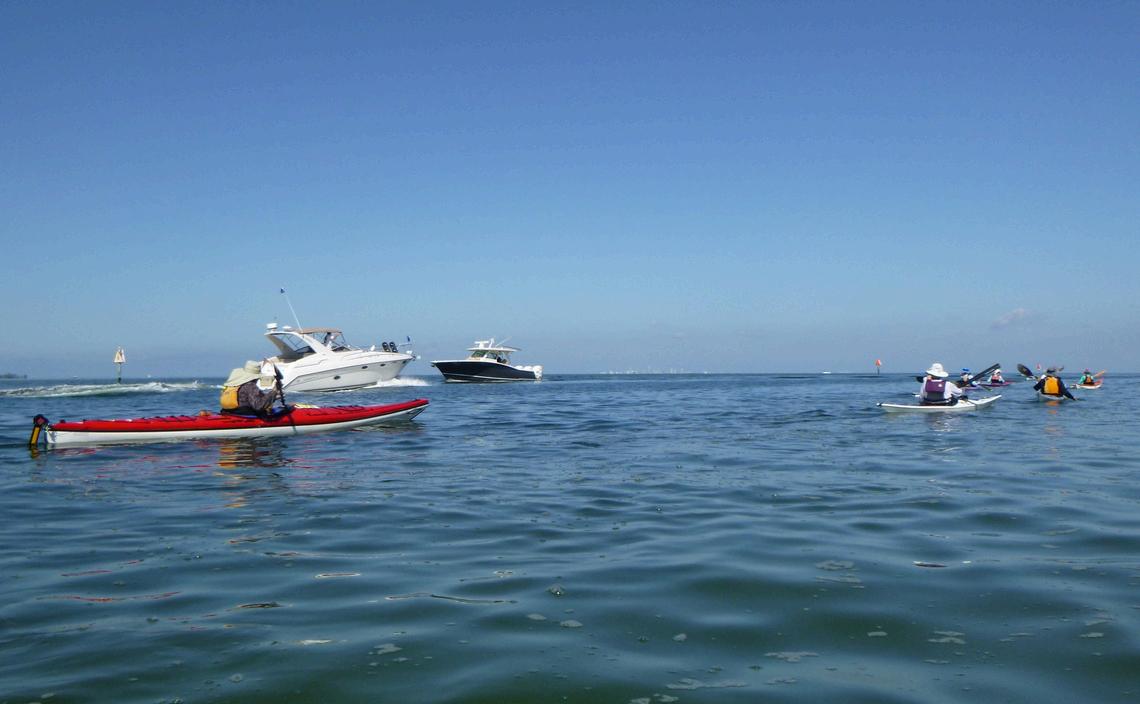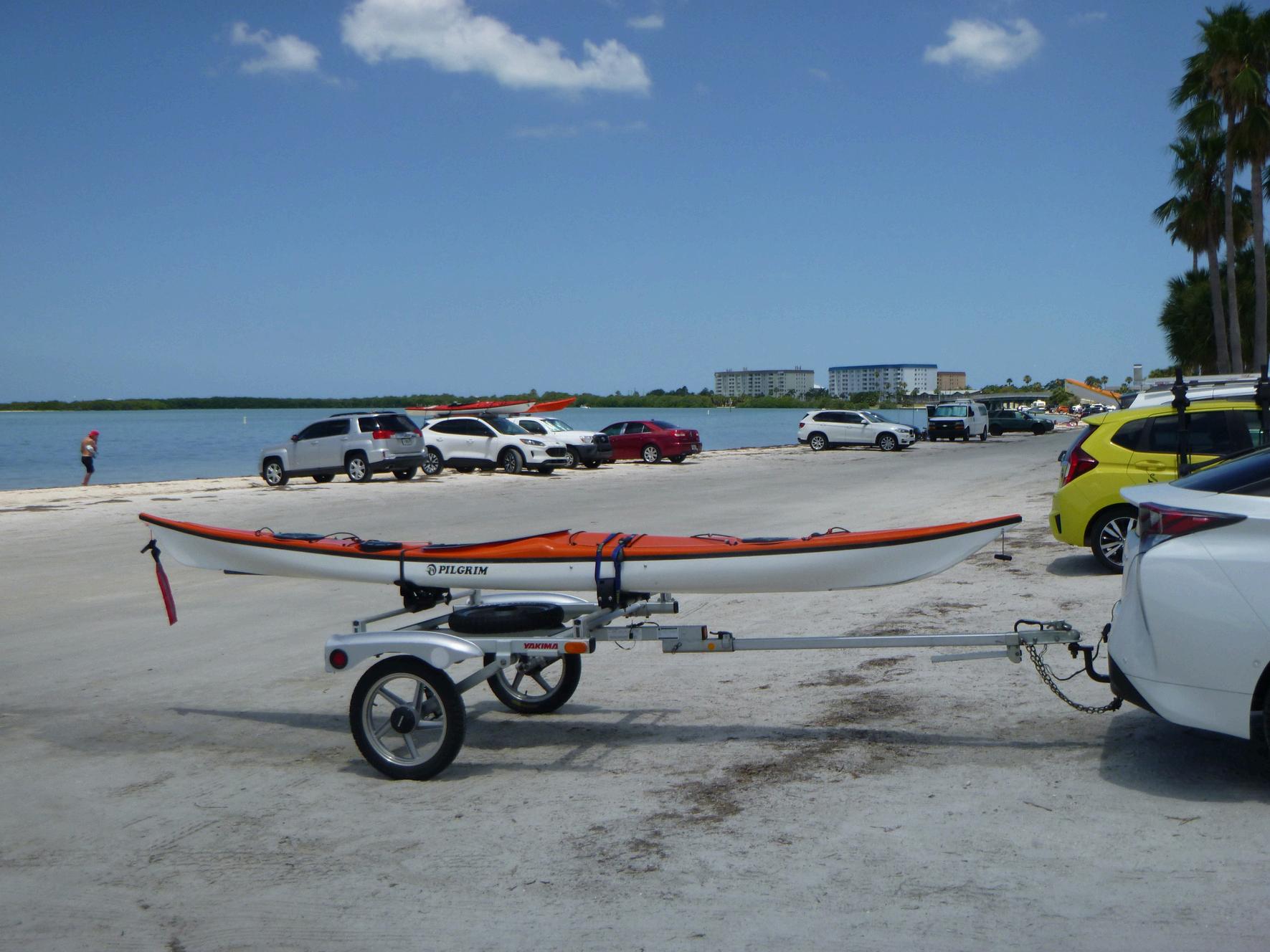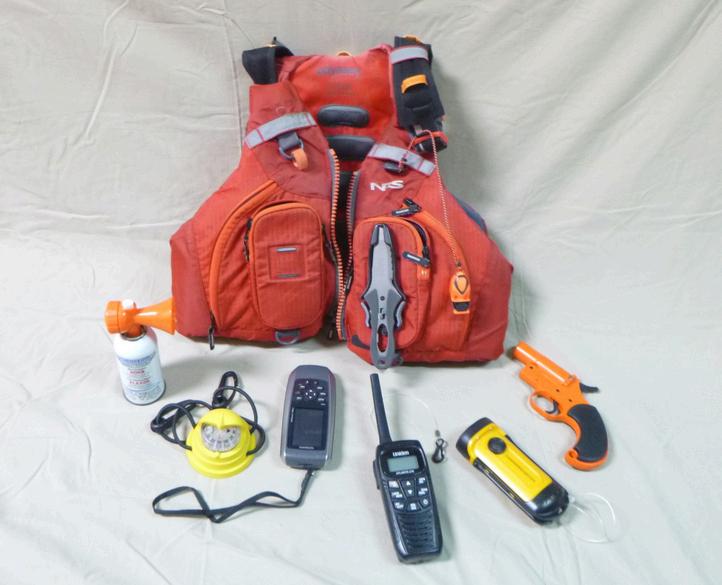
7 minute read
PADDLE SMARTS
by theensign
Should paddlers take a boating safety course?
BY JIM GREENHALGH
► Early on March 26, 2024, the container ship Dali struck the Francis Scott Key Bridge in Baltimore, causing the catastrophic collapse of the bridge and closing of the harbor. Immediately, the U.S. Coast Guard established a safety zone for all navigable waters within a 2,000-yard radius of the bridge, per Marine Safety Information Bulletin 03624. Reported on the national news, this safety zone prohibited entry of all vessels or people without authorization of the USCG Captain of the Port.
In mid-May, with most of the wreckage and ship still in place, a crew was filming the ongoing cleanup operation when a sea kayaker paddled right down the side of the collapsed bridge in what appeared to be a sightseeing trip.
Approximately halfway across in the area of the main channel, a USCG patrol boat intercepted the paddler. After a stop and some discussion, the paddler returned quickly in the opposite direction.
This encounter was posted on YouTube. By the appearance of the paddling equipment and ability, this individual appeared to be an experienced kayaker but demonstrated a lack of knowledge of the rules.
Had this individual taken America’s Boating Course or a similar boating safety course, they would have learned about Homeland Security and the various restrictions within USCG-designated safety and security zones.
Few paddlers ever take a boating safety course. Many believe that these courses apply only to powerboats and have nothing to do with paddlecraft. In a recent discussion on social media about requiring all boaters to take a safe boating course, many paddlers felt that such a requirement should apply only to powerboaters, not to paddlers. By the responses, it was apparent that few people understood that paddlecraft are considered boats and that paddlers are subject to the same rules as any other vessel operator. Furthermore, few paddlers are aware that if they were involved in a collision with a powerboat, they, too, would be charged with violations of the Navigation Rules and share fault with the powerboat operator.
Paddlecraft are boats
Canoes, kayaks, stand-up paddleboards and other human-powered watercraft are by law considered a vessel; the person in control is the operator and subject to the same rules as any other vessel operator.
Definitions From Code Of Federal Regulations
33 CFR 173.3
Vessel: Every description of watercraft or other artificial contrivance used, or capable of being used, as a means of transportation on water
Paddlecraft: A vessel powered only by its occupants, using a single- or double-bladed paddle as a lever without the aid of a fulcrum provided by oarlocks, thole pins, crutches or similar arrangements
Operator: The person who is in control or in charge of a vessel while it is in operation
What do you learn in a boating safety course?
All who operate any type of vessel on the water should have a working knowledge of the federal and state regulations that apply to them and their vessel. Boating courses cover in depth the various operator responsibilities regarding the rules, regulations, required equipment and other safety concerns.
Registration: All vessels equipped with propulsion machinery must be registered in the state of principal use. Each state has rules regarding vessel registration, and some require paddlecraft to be registered. A boating course will cover the laws of the state where the course is offered
Required safety equipment: Paddlecraft operators .are required to carry a USCG-approved wearable life jacket or personal flotation device, and a sound-producing device (a whistle is acceptable). If operating at night, they must display navigation lights; if operating at night and paddling in coastal waters and the Great Lakes, they must also carry visual distress signals.
PFDs: Paddlers will learn about the various types of PFDs available, the level of buoyancy, and the advantages and disadvantages of each type. Boating safety courses also discuss maintenance and care to ensure the PFD remains serviceable.
Sound-producing devices: Paddlers will learn about the different sound devices available to boaters along with the various signals that must be used in accordance with the Navigation Rules.
Navigation lights: Paddlers will learn the different types of lights available to meet the requirement that paddleboats operating at night must display navigation lights.
Visual distress signals: Paddlers operating at night in open waters are required to carry visual distress signals. They will learn about both pyrotechnic and electronic types, where they are to be carried, and how they are to be used.
Navigation Rules: All boaters, including paddlecraft operators, should have a working knowledge of the Navigation Rules, often referred to as “the rules of the road,” which are a set of rules intended to prevent collisions. As paddlers encounter various types of vessels on the water, they need to understand the responsibilities between vessels to be able to immediately determine whether they are the stand-on or giveway vessel in overtaking, head-on or crossing situations. Students will also learn the required navigation lights, sound signals and distress signals to be used on the water.
ATONS: Paddlers will learn the U.S. Aids to Navigation System, which refers to the various buoys and beacons found on the water. These markers assist all boaters to navigate their vessels in safe water, know their location, and provide information regarding navigation safety and regulated areas. Paddlers will learn the “red, right, returning” rule used in U.S. waters so they understand the traffic pattern when navigating around channels and other vessel traffic.

Restricted navigation areas: Many boating areas are restricted or exclude all or certain types of vessels. Some of these areas are clearly marked on the water while others are only marked on the nautical chart. Safe boating course students will learn about various vessel exclusion zones, such as swimming and environmental areas, and the Homeland Security restrictions around bridges, power plants, dams, harbors and other critical infrastructure.
A wealth of information can be learned in a safe boating course, including the responsibilities to render assistance to distressed mariners, accident reporting, marine VHF radio procedures, and how to use a compass and GPS. These courses also cover other subjects useful to paddlers, including boating in adverse conditions, boat trailers, and water sports safety including paddle sports.
America’s Boating Club | United States Power Squadrons offers two versions of America’s Boating Course. The eight-hour class includes the information discussed above. A 16-hour version includes an introduction to navigation, nautical charts, digital charting and chart plotting.

Safe boating courses are for everyone
All paddlers should consider taking a public boating safety course such as America's Boating Course. These courses are for all boaters and not just powerboats. The more paddlers understand how power and sailboats operate and the rules they must follow, the less likely they are to become involved in a potentially deadly collision with one of these vessels.
Paddlers will be pleasantly surprised by the amount of information they will learn in a boating course, and graduates will become more knowledgeable boaters, increasing the safety of all mariners on the water. Also, as I can tell you from experience, it’s a lot of fun! ■
ABOUT THE AUTHOR
Jim Greenhalgh of St. Petersburg Sail & Power Squadron/22 is a senior navigator, vessel examiner, and instructor, having taught boating safety and navigation since 1991. He draws on his vast sail and powerboating experience as a lifelong boater and avid sea kayaker Jim leads trips for the Kayak Adventure Group, a sea kayaking club based on Florida’s west coast that he co-founded. He also wrote Navigation Rules for Paddlecraft, a must-read for all paddlers.










